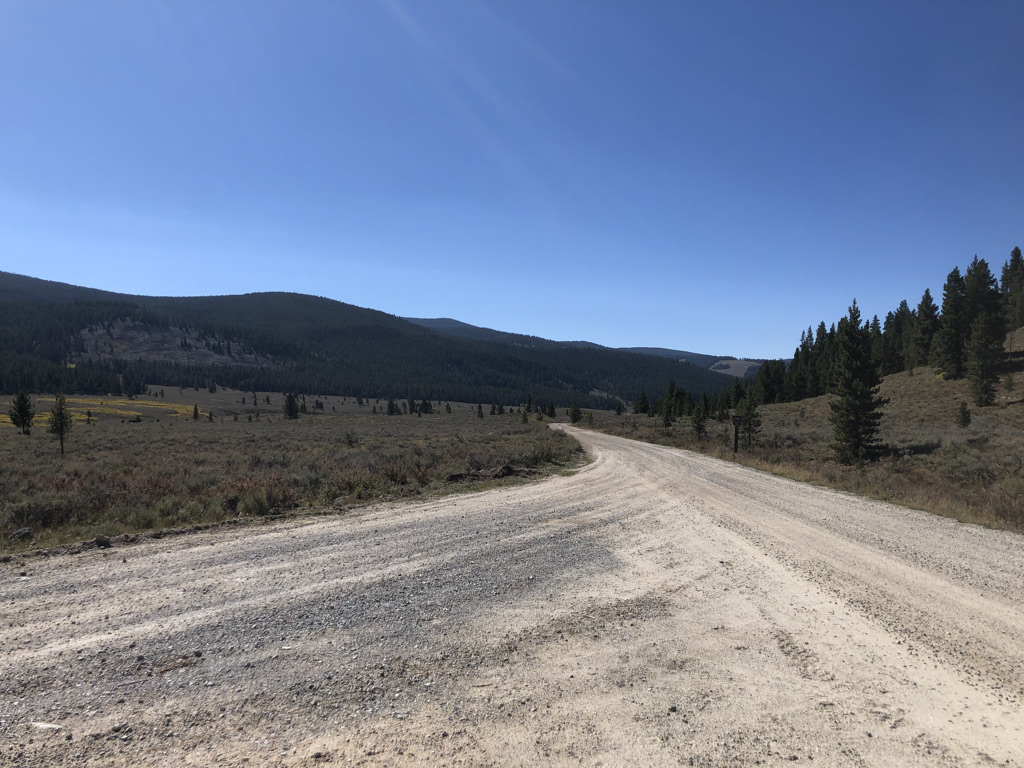Running, especially trail running is one of those sports that's hard to stay away from. For me, this has certainly been true. When you get it right, it's good fun. Blazing through aspen glades, traversing across boulder fields, falling face first after tripping on the smallest spruce root. Yeah good fun... There's always that one event, one trail, or collection of peaks on your mind and it can be extremely hard to shake those nagging thoughts.
Unfortunately, it's extremely easy to just stop trail running. Injury, illness, burnout can all play a role in this decline. Trail running is a high impact and mentally demanding sport. I can say I have dealt with the big three: Injury, illness, and burnout. This begs the question of: How can you go from no running to running an ultramarathon in a realistic time frame, minimizing the possibility and impact of these running-inhibitors?

Spring Creek Drainage approx. 30 miles from Gunnison CO. September 2023
There are a ton of ultramarathons out there, and none of them are easy. No matter the elevation change, no matter the altitude, no matter the length, and no matter the competition. Prepare in a way that sets you up for success and not imminent catastrophe:
- Train within your limits: A 10 mile run at 7 minute pace would be way outside my limits at the moment. Why? I've run a little more than 100 miles this year with most of my runs being between 2-3 miles each. And each of these runs have been at around 10 minute/mile pace. This run would take me out for a week at least, and I'd be extremely lucky if I didn't injure myself. So, make sure to keep distance within reason, and make sure the pace is something comfortable. A pace where form doesn't fly completely out the window. :)
- Recovery: This is something that can be completely overlooked. Recovery should be completed right after activity, whether that activity was running or crosstraining - it doesn't matter. For me recovery involves stretching, rolling, and core for at least 30 minutes. Whatever your recovery process, it should be active, don't be scrolling through social media or anything like that; Focus on your form, and your breathing.
- Problem Areas: These are areas of your body that could be hindering your running now, and have hindered it in the past. These are not something to take lightly, they need your care and attention. They can and will come back if neglected. For instance, the sesamoid bone in my foot has been nagging me for several years now. This is something that prevented me from running for a 6-9 month long period. I focus on stretching this area of my foot on days where I have run, and I focus on both strengthening and stretching it on days that I have not run. Strengthening and running the same day would be a bit overkill, considering the chronic weakness of that specific area. Strength, stretch, balance - do what feels right and do not go overboard.
- Hydration and Food: Hydration and food intake before, after, and during activity is also crucial for limiting the existance and extent of the big 3. Every 30-45 minutes during activities longer an hour food and liquid intake are paramount. Really anything rich in carbohydrates is the go to here. For longer activities, more than 3 hours in duration, more well rounded, easily-digestable foods are key every 1.5-2 hours. This category of training is different for everybody, we each have our own preferences but this is a good rule of thumb. Sometimes I find myself having to eat every 15 minutes during activity just to keep my blood sugar within range. Eat an overall well balanced diet, and try to eat at consistent times of the day. For example, Breakfast - 8am-10am, Lunch - 12pm-2pm, Quick Snack - 3pm-4pm, Dinner 7pm-9pm.
Copper Mountain from Vail Pass. September 2023
With running it is very hard to gauge what you should and should not be doing. The most important part is just listening and taking care of yourself. If you don't downplay how you're feeling then your chance of a successful reintroduction to running is much higher.
Thank you for reading! And check out some of the other articles too.
 X
X